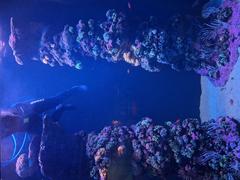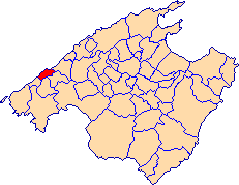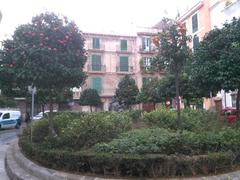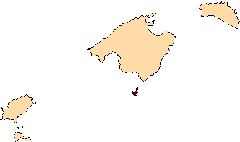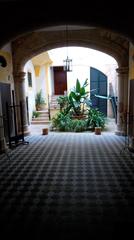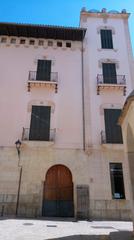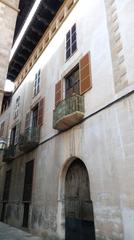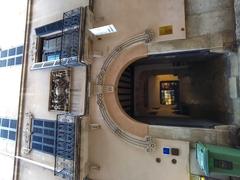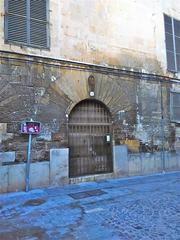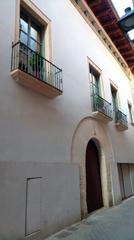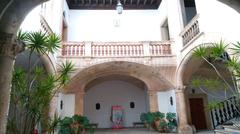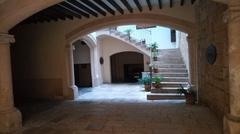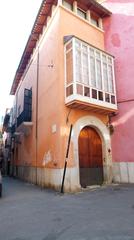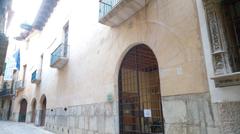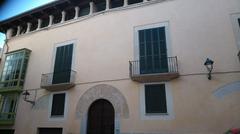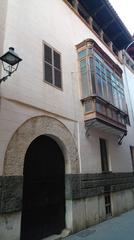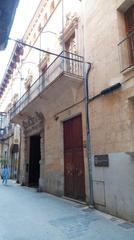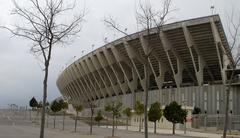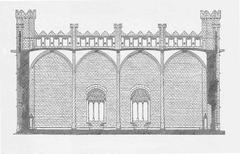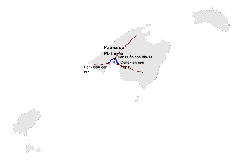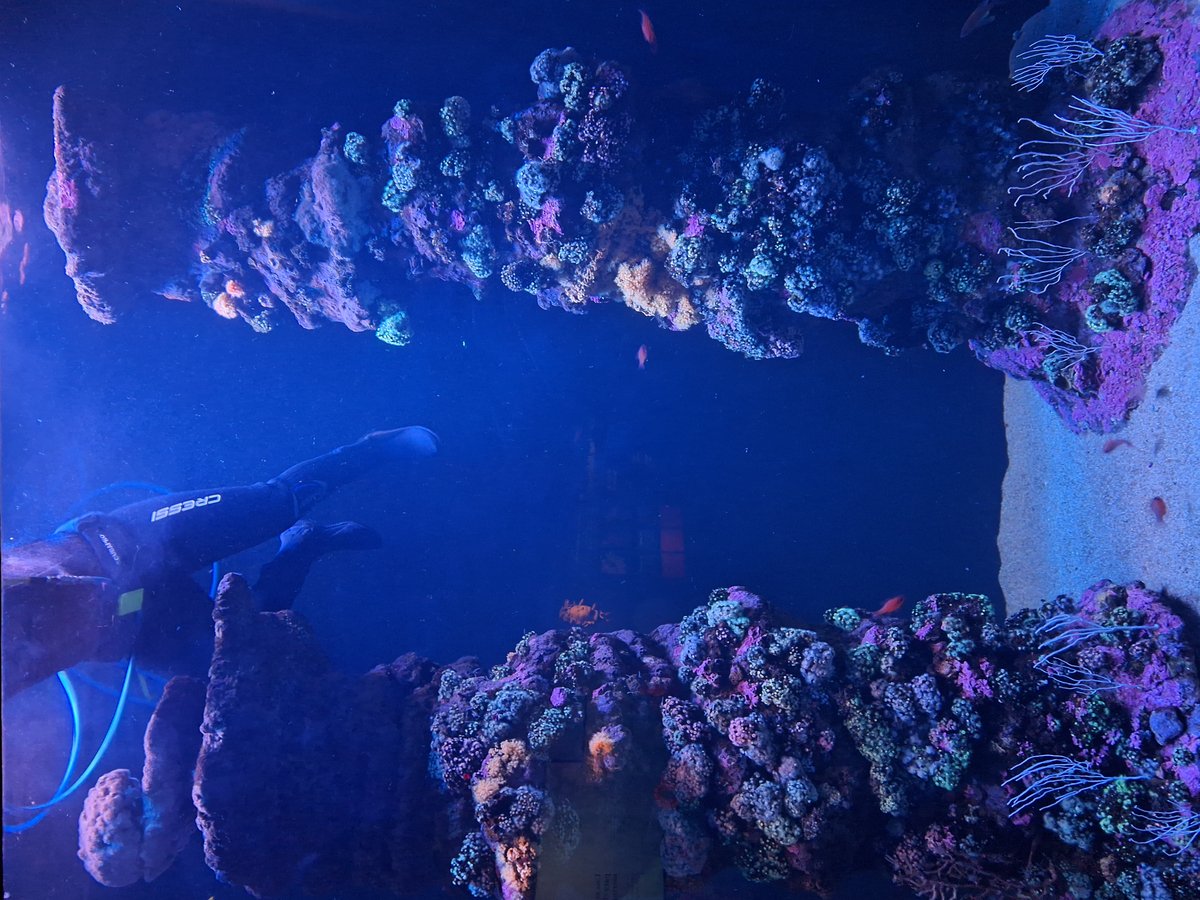
Visiting Palma Aquarium: Hours, Tickets, and Tips for Palma de Mallorca, Spain
Date: 17/07/2024
Introduction
Palma Aquarium, located in the stunning coastal city of Palma de Mallorca, Spain, is a must-visit destination for marine life enthusiasts and families. Opened in 2007, this state-of-the-art aquarium was developed by Coral World International, a company known for creating immersive marine parks worldwide. With an investment of approximately €20 million, Palma Aquarium spans over 41,000 square meters and houses more than 8,000 animals from 700 different species, making it one of the most diverse marine collections in Europe. The aquarium’s design seamlessly blends modern architecture with natural aesthetics, providing a realistic environment for marine life and an immersive experience for visitors. (Official Palma Aquarium Website)
Palma Aquarium is also a crucial player in marine conservation and education. The facility is involved in various research projects and conservation programs aimed at protecting endangered species and preserving marine ecosystems. Notable initiatives include the breeding program for the endangered loggerhead sea turtle and collaborations with universities and research institutions to study marine biology and ecology. Educational programs at the aquarium are designed to raise awareness about marine conservation, offering guided tours, workshops, and interactive exhibits. (IUCN Red List)
This comprehensive guide will provide you with all the necessary information to plan your visit to Palma Aquarium, including details on ticket prices, visiting hours, notable exhibits, special events, and nearby attractions. Whether you’re looking to dive with sharks, explore the Mediterranean Gardens, or learn about the delicate beauty of jellyfish, this guide has something for everyone.
Table of Contents
- [Introduction](#introductionintroduction)
- [Origins and Development](#origins-and-developmentorigins-and-development)
- [Architectural and Design Features](#architectural-and-design-featuresarchitectural-and-design-features)
- [Ecological and Educational Significance](#ecological-and-educational-significanceecological-and-educational-significance)
- [Visitor Information](#visitor-informationvisitor-information)
- [Visiting Hours](#visiting-hoursvisiting-hours)
- [Tickets](#ticketstickets)
- [Travel Tips](#travel-tipstravel-tips)
- [Accessibility](#accessibilityaccessibility)
- [Notable Exhibits and Features](#notable-exhibits-and-featuresnotable-exhibits-and-features)
- [Big Blue](#big-bluebig-blue)
- [Mediterranean Gardens](#mediterranean-gardensmediterranean-gardens)
- [Jungle](#junglejungle)
- [Mediterranean Sea](#mediterranean-seamediterranean-sea)
- [Tropical Seas](#tropical-seastropical-seas)
- [Jellyfish](#jellyfishjellyfish)
- [Nautilus Park](#nautilus-parknautilus-park)
- [Aquadome](#aquadomeaquadome)
- [Sea Turtle Rescue Center](#sea-turtle-rescue-centersea-turtle-rescue-center)
- [Touch Pools](#touch-poolstouch-pools)
- [Thematic Exhibits](#thematic-exhibitsthematic-exhibits)
- [Special Events and Guided Tours](#special-events-and-guided-toursspecial-events-and-guided-tours)
- [Best Photographic Spots](#best-photographic-spotsbest-photographic-spots)
- [Nearby Attractions](#nearby-attractionsnearby-attractions)
- [Awards and Recognition](#awards-and-recognitionawards-and-recognition)
- [FAQ](#faqfaq)
- [Conclusion](#conclusionconclusion)
Origins and Development
Palma Aquarium, located in Palma de Mallorca, Spain, opened its doors to the public in 2007. The aquarium was developed by Coral World International, a company renowned for creating marine parks worldwide. The primary aim was to provide an educational and entertaining experience that fosters a deeper understanding and appreciation of marine life. The construction of the aquarium was a significant investment, costing approximately €20 million, and it took nearly three years to complete.
Architectural and Design Features
The design of Palma Aquarium is a blend of modern architecture and natural aesthetics. The facility spans over 41,000 square meters, with both indoor and outdoor spaces. The aquarium houses more than 8,000 animals from 700 different species, making it one of the most diverse marine collections in Europe. The layout is designed to mimic natural habitats, providing a realistic environment for the marine life and an immersive experience for visitors.
Ecological and Educational Significance
Palma Aquarium plays a crucial role in marine conservation and education. The facility is involved in various research projects and conservation programs aimed at protecting endangered species and preserving marine ecosystems. One of the notable initiatives is the breeding program for the endangered loggerhead sea turtle (Caretta caretta). The aquarium also collaborates with universities and research institutions to study marine biology and ecology.
Educational programs at Palma Aquarium are designed to raise awareness about marine conservation. The aquarium offers guided tours, workshops, and interactive exhibits that educate visitors about the importance of protecting marine life. The facility also hosts school groups and provides educational materials for teachers to incorporate into their curriculum.
Visitor Information
Visiting Hours
Palma Aquarium is open daily from 10:00 AM to 6:00 PM. During peak seasons, the hours may extend, so it’s advisable to check the official website for the most up-to-date information.
Tickets
Ticket prices vary based on age and package options. Standard adult tickets are priced at €25, while children’s tickets (ages 3-12) are €14. There are also family packages and annual passes available. Discounts are offered for seniors, students, and groups. Tickets can be purchased online or at the entrance.
Travel Tips
The aquarium is located in the coastal area of Palma, making it easily accessible by public transport, car, or even on foot from nearby hotels. Parking is available on-site. For a more enjoyable visit, consider arriving early to avoid crowds and make the most of your day.
Accessibility
Palma Aquarium is committed to making the experience accessible for all visitors. The facility is wheelchair-friendly, with ramps and elevators available throughout the premises. There are also accessible restrooms and parking spaces. Visitors with disabilities can request special assistance from the staff to ensure a comfortable visit.
Notable Exhibits and Features
Big Blue
One of the most significant features of Palma Aquarium is the Big Blue, the deepest shark tank in Europe, with a depth of 8.5 meters. The tank houses several species of sharks, including the sand tiger shark (Carcharias taurus). The Big Blue provides a unique opportunity for visitors to observe these magnificent creatures up close and learn about their behavior and conservation status.
Mediterranean Gardens
The Mediterranean Gardens offer a serene outdoor space where visitors can explore the native flora of the Balearic Islands. This area features a variety of Mediterranean plant species, including olive trees, lavender, and rosemary. The gardens are designed to educate visitors about the importance of preserving local ecosystems and provide a peaceful retreat from the bustling indoor exhibits.
Jungle
The Jungle exhibit recreates the lush environment of a tropical rainforest, complete with a variety of exotic plants and animals. Visitors can walk through this humid, green space and encounter species such as piranhas, poison dart frogs, and iguanas. The exhibit also features a waterfall and a large pond filled with koi fish. The Jungle aims to raise awareness about the biodiversity of rainforests and the threats they face due to deforestation and climate change.
Mediterranean Sea
The Mediterranean Sea exhibit showcases the rich marine life found in the waters surrounding the Balearic Islands. This section of the aquarium features several tanks, each representing different habitats within the Mediterranean, such as rocky shores, seagrass meadows, and coral reefs. Visitors can observe a variety of species, including octopuses, moray eels, and colorful fish. The exhibit also highlights the importance of marine conservation and the efforts being made to protect the Mediterranean’s unique ecosystems.
Tropical Seas
The Tropical Seas exhibit transports visitors to the vibrant and diverse underwater world of tropical oceans. This section features several large tanks filled with colorful coral reefs and a wide array of marine species, such as clownfish, angelfish, and sea anemones. One of the highlights of this exhibit is the Coral Garden, a stunning display of live corals that showcases the beauty and complexity of these vital marine organisms. The Tropical Seas exhibit aims to educate visitors about the importance of coral reefs and the threats they face from pollution, overfishing, and climate change.
Jellyfish
The Jellyfish exhibit is a mesmerizing display of these delicate and ethereal creatures. The exhibit features several tanks filled with different species of jellyfish, including moon jellies, sea nettles, and upside-down jellyfish. The tanks are illuminated with soft, colorful lighting that enhances the beauty of the jellyfish as they gracefully float through the water. This exhibit provides visitors with a unique opportunity to learn about the biology and behavior of jellyfish, as well as their role in marine ecosystems.
Nautilus Park
Nautilus Park is a dedicated play area for children, designed to provide a fun and educational experience. The park features a variety of interactive exhibits and activities, such as touch pools where children can safely interact with starfish and sea cucumbers. There are also educational games and puzzles that teach children about marine life and the importance of ocean conservation. Nautilus Park is a great place for families to relax and enjoy some hands-on learning together.
Aquadome
The Aquadome is a state-of-the-art 3D cinema that offers an immersive experience, taking visitors on a virtual journey through the ocean. The 360-degree dome screen and high-definition 3D projection create a stunning visual experience, making visitors feel as though they are diving into the depths of the ocean. The Aquadome features a variety of films that showcase different aspects of marine life, from the vibrant coral reefs to the mysterious deep sea. This exhibit is both entertaining and educational, providing a deeper understanding of the ocean and its inhabitants.
Sea Turtle Rescue Center
The Sea Turtle Rescue Center is an important part of Palma Aquarium’s conservation efforts. This facility is dedicated to the rescue, rehabilitation, and release of injured and sick sea turtles. Visitors can learn about the different species of sea turtles found in the Mediterranean and the threats they face, such as plastic pollution, fishing nets, and boat strikes. The center also provides information on how individuals can help protect sea turtles and their habitats. The Sea Turtle Rescue Center is a testament to Palma Aquarium’s commitment to marine conservation and education.
Touch Pools
The Touch Pools offer a hands-on experience where visitors can interact with a variety of marine creatures, such as starfish, sea urchins, and crabs. These shallow pools are designed to provide a safe and educational environment for visitors to learn about the different species and their unique adaptations. The Touch Pools are staffed by knowledgeable guides who provide information and answer questions, making this exhibit both fun and informative for visitors of all ages.
Thematic Exhibits
Palma Aquarium also features a range of thematic exhibits that focus on specific aspects of marine life and oceanography. These exhibits change periodically and cover a variety of topics, such as the impact of climate change on marine ecosystems, the importance of marine protected areas, and the fascinating world of deep-sea creatures. The thematic exhibits provide visitors with a deeper understanding of the challenges facing our oceans and the efforts being made to protect them.
Special Events and Guided Tours
Palma Aquarium hosts various cultural events and activities, such as art exhibitions, music concerts, and themed festivals. These events not only enhance the visitor experience but also promote cultural exchange and community engagement. Guided tours are available and are highly recommended for a deeper understanding of the exhibits and conservation efforts.
Best Photographic Spots
For photography enthusiasts, the Big Blue shark tank and the Jellyfish Tank offer excellent photo opportunities. The Mediterranean Gardens also provide picturesque settings with their lush greenery and water features. Be sure to capture the vibrant marine life and unique architectural elements of the aquarium.
Nearby Attractions
Palma Aquarium is conveniently located near other tourist attractions in Palma de Mallorca. Nearby sites include the historic Palma Cathedral, the Bellver Castle, and the beautiful Playa de Palma beach. Combining a visit to the aquarium with these attractions can make for a well-rounded day of exploration.
Awards and Recognition
Palma Aquarium has received several awards and accolades for its contributions to marine conservation and education. In 2011, the aquarium was awarded the ‘Certificate of Excellence’ from TripAdvisor and continues to be recognized as a leading marine park. (TripAdvisor Certificate of Excellence)
FAQ
What are the visiting hours for Palma Aquarium? The aquarium is open daily from 10:00 AM to 6:00 PM. Peak season hours may vary, so check the official website for updates.
How much do tickets to Palma Aquarium cost? Standard adult tickets are €25, children’s tickets (ages 3-12) are €14, with various family packages and discounts available.
Is Palma Aquarium accessible for people with disabilities? Yes, the facility is wheelchair-friendly, with ramps, elevators, accessible restrooms, and parking spaces available.
What are some notable exhibits at Palma Aquarium? The Big Blue shark tank, the Mediterranean Gardens, and the Jellyfish Tank are some of the highlights.
Are there special events or guided tours at Palma Aquarium? Yes, the aquarium hosts various events and offers guided tours for a more comprehensive experience.
Conclusion
Palma Aquarium offers a unique and enriching experience for visitors of all ages. From the awe-inspiring Big Blue shark tank to the educational programs on marine conservation, there’s something for everyone. Don’t forget to check the official website for the latest updates on visiting hours and ticket prices. Download our mobile app Audiala for more travel guides, and follow us on social media for the latest updates and tips.
